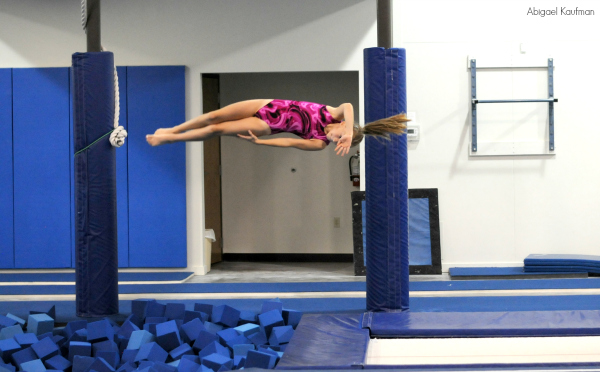How do we get there?
Hi All,
One of the things I find most troubling is when I see gyms that have highly successful compulsory programs, but when their children become optionals their gym can’t sustain the same kind of results. My interpretation of this is that often they are trying to teach kids too much too fast, or to put it another way, upper level skills and techniques weren’t introduced early enough and in good ways. I’m a big fan of letting younger children work upper level skills and progressions in safe and technically correct ways. The longer children have to figure a skill out, the less time we as coaches and they as gymnasts have to spend panicking thinking “I need to get this in x time frame to put in my routine.”

This first video is from Colorado Aerials of their level 5s and 6s. I’m a big fan of starting series work as soon as children can back walkover/back handspring well on the floor. Even if it’s working on a line, teaching kids how to transition between skills well early makes a huge difference down the line.
By the way here are the same beam extenders, they are amazing.
This second video is of one of my favorite front layout drills. It’s also a great one to use at the lower levels. As soon as your kids have the good concept of body tension, and the shape in a layout it’s a great one to let them play with.
Train hard!

1 Comment
Thanks for your input. The numbers of hours inadcited were averages and starting recommendations and as I inadcited, there is considerable variation and widely varying beliefs about what is appropriate and what works. The Karolyis reportedly had gymnasts working as much as 49 hours per week and sometimes 7 days per week, while Shawn Johnson reportedly won Olympic Gold working only four hours per day. There are scientific studies that indicate longer practices lead to increased injuries. Thus, there is a critical balance between the length of practice time and progress that must be maintained, while simultaneously avoiding overtraining injuries and burn-out. The most effective training schedule often varies from gymnast to gymnast and certainly coaching beliefs about practice length vary considerably. Primarily, this article wanted to emphasize that just more and more practice is not always better or the safest for the average gymnast. Parent, coaches and gymnasts must consider training time in relation to level of training, age and actual chances to actually reach Level 10 and above. Just interested, you didn’t mention why you retired or how old you were when you were when you retired. Anyway, thanks for challenging the assumptions of the article. The topic is certainly not one of those areas of the sport that has been clearly established beyond a reasonable doubt.